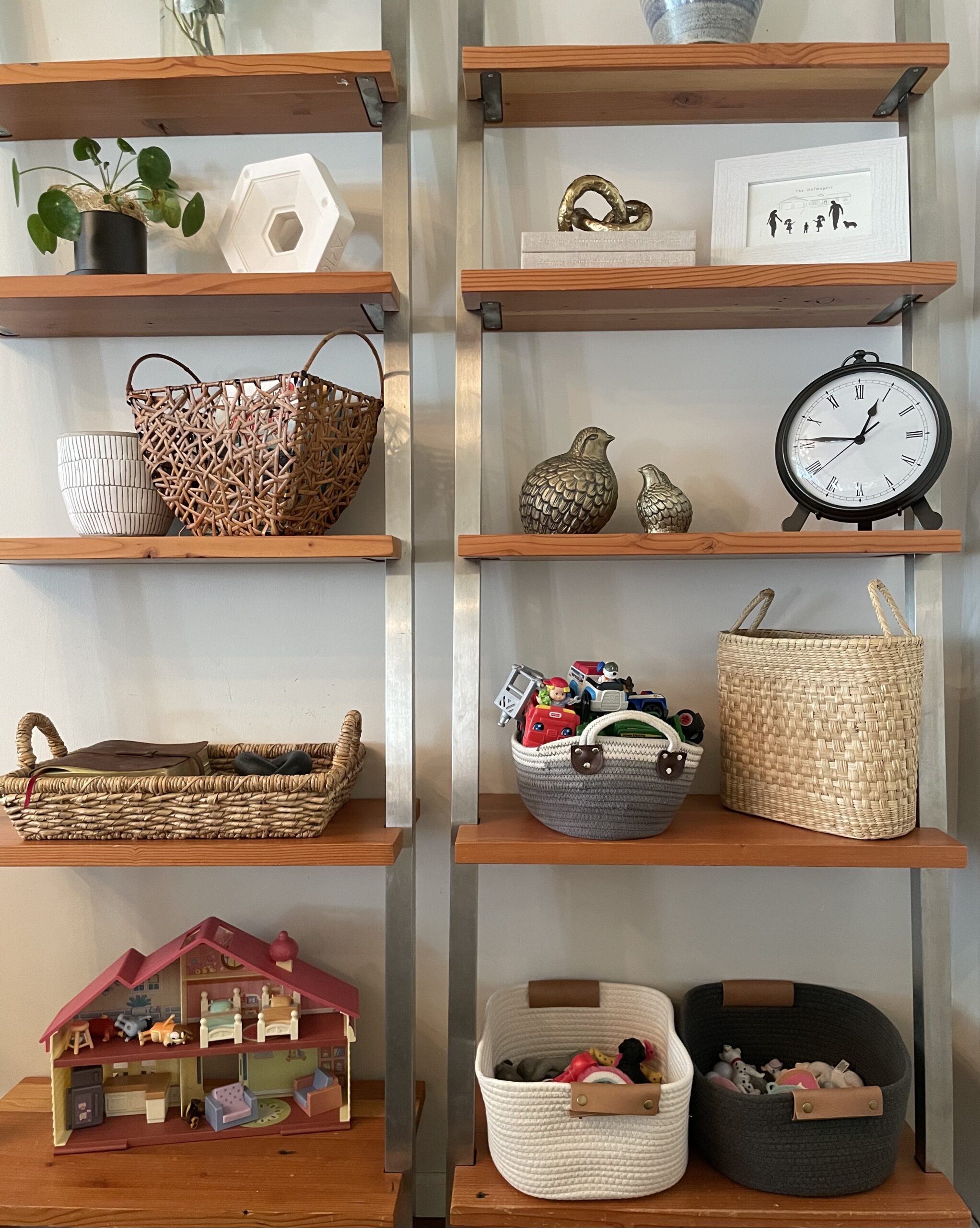
When I shared about our toy organization and rotation system on Instagram this week, I got a lot of questions about what it actually looks like to rotate toys, and how to implement a toy rotation system. While I’m no toy or home management expert, I do feel like we have a pretty nice groove down for keeping toys accessible and within reach without feeling like they take over our entire house or that their are toys spilling out everywhere you look.
Six years ago, when I was a new mom to little Ainsley, my friend Kelsey took care of Ainsley for a handful of hours each week while I worked. She had one daughter of the same age as Ainsley and it was such a sweet gift to have a place for Ainsley to go where I felt comfortable and that worked with my freelance schedule. Kelsey is a former preschool teacher, and from the very beginning of our friendship I’ve been impressed with her organization, structure and order that she implements in her home. One of my biggest take-aways was the concept of toy rotation and orderly toy management.
While I can be remarkably NOT Type A sometimes, keeping a tidy and orderly home is one area where I’m fairly Type A. Toys all have a specific bin or basket to go in – together with other toys in a similar category – and I prefer toys to be out and accessible, but organized in such a way that our house doesn’t look like a giant toy store or kids play center.
A few of the benefits of having a toy rotation system include:
*fostering creativity
*easier clean up
*improved independent play skills for kids
*decreased overwhelm for kids
Personally, I find that it’s time to rotate toys any time I hear my kids telling me they are bored, they “don’t have any toys to play with” or they are losing interest in what toys are currently out to play with. When I do rotate toys it gives more life to the toys the kids have and I find they play more creatively and independently with the toys that are out. Note that this can also apply to stuffed animals – which we always seem to have too many of – so I tend to put them in trash bags, store some away, and then get out a new bag every so often.
Tips for Toy Management:
ONE // Keep the Basics Accessible
We have a closet right off our kitchen which has the everyday basics accessible for the kids. I do organize and sort this closet occasionally, but it’s rotated far less frequently. It contains craft supplies, coloring books, crayons, play dough kits, and Duplo legos and Magna Tiles.
TWO // Rotate the Major Things
We have a few “toy spots” in our main living areas. A spot in our multi-purpose room that usually has a toy station, a craft table by our big living room window, book shelves in our living room, and the corner of our living room. These are key places where there are always toys which are accessible and on display for the kids but aren’t so “in your face” that you feel like you’re looking at toys all the time. These are the key areas we rotate toys.
On our craft table, I typically have something like the Peppa Pig house, Little People Farm, Little Woodeez Tree House, etc. In the corner of our living room I usually have something larger (such as a doll house or Barbie Dream House), I rotate books on the shelves, and then rotate the toys on the bottom two shelves of our book shelves in the living room.
THREE // Make It Pretty
When I can, I either try to keep the toys out of the direct line of sight or disguise the toys in pretty baskets or storage containers. I got some pretty cloth baskets from Target (Threshold brand!) on the bottom shelves of our bookshelves in the living area. The kids can still see the toys that are on display, but from a distance it just looks a little nicer to the eye. Maybe this isn’t important to you – and that’s totally OK – but I found my kids play best with toys that are out and in the living room, and I do better when the toys look a little easier on the eyes. 😉
Of course there are more nuances you can implement to any toy rotation system, but these three tips will get you well on your way to putting a system in place that works for everyone in your family. When the toys are no in use/on display, I typically store them away in a closet in the basement or tucked away in the closets in the kids rooms! Trust me when I say this practice has been so beneficial on so many levels.
Madison
